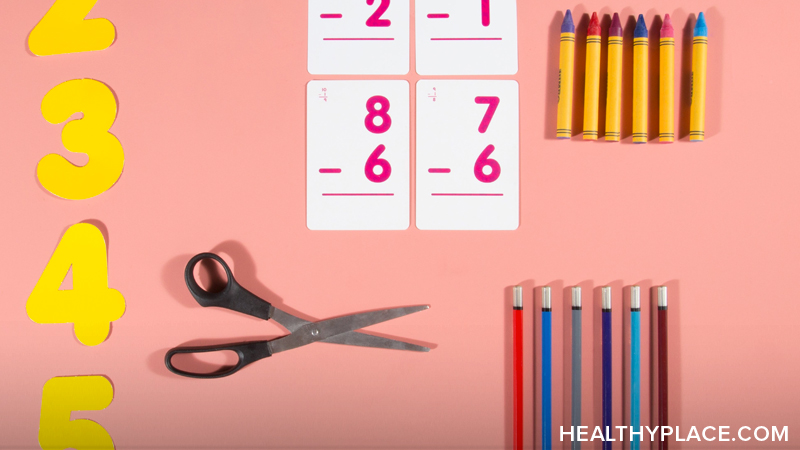What Is a Specific Learning Disability? Definition, Types, Causes

When a child has a specific learning disability, they struggle significantly with certain learning areas and tasks. Teachers will notice if a student is performing at a level much lower than what is standard for their age. Parents see their child struggling with homework (or avoiding it altogether), or they notice that their child hates, and does poorly with, reading or games and activities involving reading, writing, or math. Whether it’s mild, moderate, or severe, a specific learning disability interferes in academic performance and affects a child’s self-esteem, emotions, behavior, and friendships.
Two terms are used for the learning problems that hinder kids. “Specific learning disability” is a technical description used in the educational and legal systems. “Specific learning disorder,” a new diagnosis introduced in the DSM-5 in 2013, is the medical term used in officially diagnosing someone with a learning problem.
There’s a bit of difference between the two official terms, but outside of education, law, medicine, and psychiatry, many people use them interchangeably. Therefore, this article uses both terms to refer to the same concept: a substantial set of difficulties that disrupt the learning and life of a child.
What Is a Specific Learning Disability? Definition of Specific Learning Disorder
To understand what a specific learning disability is, it’s helpful to know what it is not. It isn’t an intellectual disability (formerly called mental retardation). Intelligence isn’t a factor in the inability to learn certain things. In fact, most people with a learning disability are of average or above-average intelligence. The issue with specific learning disabilities is that kids can’t acquire certain academic skills.
A specific learning disorder definition is academic underachievement that is unanticipated. A child is doing poorly in school, and at first this is surprising to teachers and parents. When a kid’s potential is strong, but their academic performance is weak, specific learning disability is often at work.
Some factors that describe what a specific learning disorder is include:
- Low scholastic achievement despite potential
- High levels of support needed for average achievement
- Fewer academic skills than agemates
- Deficiencies not explained by developmental disabilities, intellectual disabilities, neurological disorders, sensory disorder, or motor disorders
- Unrelated to external circumstances like poverty or a lack of education in the child’s family
- Persistence—learning problems don’t improve with time
A specific learning disability, then, is a permanent disorder that disrupts the ability to learn and to keep up with classmates. It has a negative impact on a child’s learning and life in general. There are multiple types of specific learning disorders that interfere with academic learning and progress.
Specific Learning Disability Types
After thorough testing and other assessments, a child might receive a diagnosis of specific learning disorder. Then, at least one subtype will be specified. The three subtypes in the DSM-5 are
- Dyslexia, a reading disorder
- Dysgraphia, a writing disorder
- Dyscalculia, a math disorder
Disabilities in reading, writing, and math are the most common specific learning disorders, but they aren’t the only ones. Other types of specific learning disabilities include:
- Auditory or processing disorders affect how the brain interprets and processes sounds and visual input
- Language processing disorder, a component of auditory processing disorder, disrupts a child’s ability to make sounds meaningful
- Non-verbal learning disorder creates problems with interpreting facial expression and body language which in turn can cause poor social skills
Specific learning disabilities can cause problems in all areas of learning. However, there isn’t a science or social studies or other learning disorder because the problems in these areas are caused by dyslexia or dysgraphia.
Specific learning disability types cause significant problems for a child. What causes these learning disorders?
Specific Learning Disability Causes
Specific learning disorder is complex, and the cause isn’t straightforward. Nonetheless, some causes have been identified: genetics or heredity and environment.
Learning disabilities have a strong genetic component. If a child has a parent with a learning disability, the child’s risk for having a specific learning disorder is much higher.
Sometimes, exposure to toxins like lead can cause or contribute to the development of a specific learning disorder. Studies have shown, too, that prenatal poor nutrition or exposure to toxic substances can cause specific learning disorder.
A specific learning disability, or specific learning disorder, is a deficit that negatively impacts a child’s ability to learn. With understanding and support from parents and teachers, kids can learn and thrive despite learning disabilities.
See Also:
APA Reference
Peterson, T.
(2022, January 17). What Is a Specific Learning Disability? Definition, Types, Causes, HealthyPlace. Retrieved
on 2026, January 2 from https://www.healthyplace.com/parenting/learning-disabilities/what-is-a-specific-learning-disability-definition-types-causes



